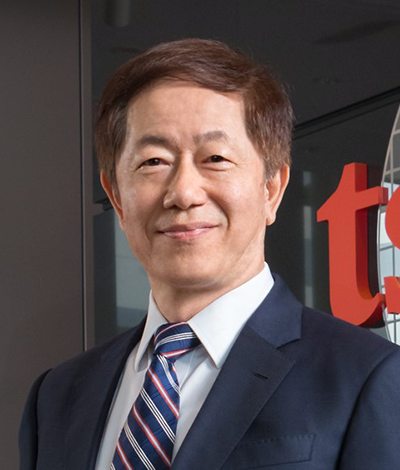Now that semiconductor conferences are virtual there are better speakers since they can prerecord and we have the extra time to do a better job of coverage. Even when conferences go live again I think they will also be virtual (hybrid) so our in depth coverage will continue.
ISSCC is one of the conferences we covered live since it’s in San Francisco so that has not changed. We will however be able to cover many more sessions as they come to our homes on our own time.
First off is the keynote by TSMC Chairman Mark Liu: Unleashing the Future of Innovation:
Given the pandemic related semiconductor boom that TSMC is experiencing, Mark might not have had time to do a live keynote so this was a great opportunity to hear his recorded thoughts on the semiconductor industry, the foundry business model, and advanced semiconductor technologies. Here are some highlights from his presentation/paper intermixed with my expert insights:
- The semiconductor industry has been improving transistor energy efficiency by about 20-30% for each new technology generation and this trend will continue.
- The global semiconductor market is estimated at $450B for 2020.
- Products using these semiconductors represent 3.5% of GPD ($2T USD).
- From 2000 to 2020 the overall semiconductor industry grew at a steady 4%.
- The fabless sector grew at 8% and foundry grew 9% compared to IDM at 2%.
- In 2000 fabless revenue accounted for 17% of total semiconductor revenue (excluding memory).
- In 2020 fabless revenue accounted for 35% of total semiconductor revenue (excluding memory).
- Unlike IDMs, innovators are only limited by their ideas not capital.
Nothing like a subtle message to the new Intel CEO. It will be interesting to see if the Intel – TSMC banter continues. I certainly hope so. The last one that started with Intel saying that the fabless model was dead did not end so well.
Mark finished his IDM message with:
“Over the previous five decades, the most advanced technology had been available first to captive integrated device manufacturers (IDMs). Others had to make do with technologies that were one or several generations behind. The 7nm logic technology (mass production in 2017) was a watershed moment in semiconductor history. In 2017, 7nm logic, was the first time that the world’s most advanced technology was developed and delivered by a pure-play foundries first, and made available broadly to all fabless innovators alike. This trend will likely continue for future technology generations…”
As we all now know Intel will be expanding TSMC outsourcing at 3nm. TSMC 3nm will start production in Q4 of this year for high volume manufacturing beginning in 2H 2022. The $10B question is: Will Intel get the Apple treatment from TSMC (early access, preferred pricing, and custom process recipes)?
I’m not sure everyone understands the possible ramifications of Intel outsourcing CPU/GPU designs to TSMC so let’s review:
- Intel and AMD will be on the same process so architecture and design will be the focus. More direct comparisons can be made.
- Intel will have higher volumes than AMD so pricing might be an issue. TSMC wafers cost about 20% less than Intel if you want to do the margins math.
- Intel will have designs on both Intel 7nm and TSMC 3nm so direct PDK/process comparisons can be made.
Bottom line: 2023 will be a watershed moment for Intel manufacturing, absolutely!
Share this post via:






Comments
6 Replies to “TSMC ISSCC 2021 Keynote Discussion”
You must register or log in to view/post comments.